22nd May 2025
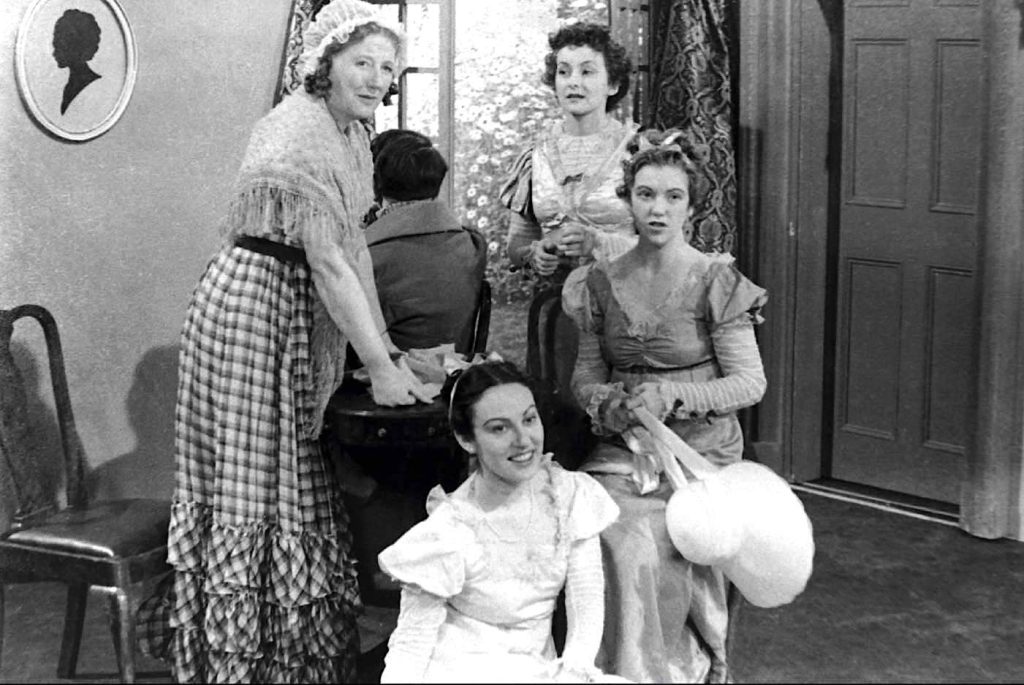
John Wyver writes: British television’s love affair with the works of Jane Austen, which today shows little signs of abating, began 87 years ago today on 22 May 1938, with a 55-minute adaptation of Pride and Prejudice. The fact that this was a Sunday is a pleasing continuity across nearly a century, although television on the Sabbath had started only seven weeks before. (Janeites had been first catered for by radio over a decade earlier, as David Hendy’s recent ‘History of the BBC’ post notes.)
As the rare photograph suggests (there’s no recording), television’s first foray into Austen’s universe had time and space for only three of the Bennet sisters, played by Antoinette Cellier (Jane), Curigwen Lewis (Elizabeth) and Eileen Erskine (Lydia; there was no Mary or Kitty), while Barbara Everest was Mrs Bennet and Allan Jeayes her husband.
Television’s first Mr Darcy was Andrew Osborn, André Morrell was Mr Wickham, Lewis Stringer took the role of Charles Bingley, and Dorothy Green incarnated Lady Catherine de Bourgh. To date, I have found no review of this live presentation [but see Comment below], which was played again on the afternoon of Friday 27 May.
read more »
21st May 2025
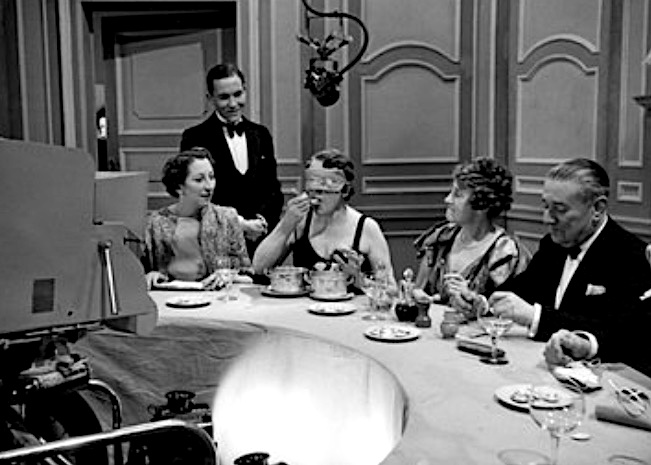
John Wyver writes: The day before the transmission variously called Bee for Boulestin or Blind Man’s Buffet on the evening of Sunday 21 May 1939, the Daily Telegraph ran an excited preview. ‘Mrs Mary Adams, the BBC producer,’ ‘Our radio correspondent’ promised, ‘has invited a number of guests who will consent to be blindfolded and led to a buffet laden with food and drink.’
A team of three men was to compete against three women, who
may be asked to distinguish between Camembert, Gruyere and Gorgonzola cheese, red and white wines, the various constituents of hors d’oeuvres, tinned and fresh food and different kinds of poultry.
One of the participants was to be philanthropist Dowager Lady Swaythling ‘who recently confessed she preferred a kipper to caviare.’
read more »
20th May 2025
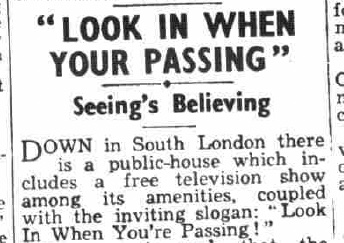
John Wyver writes: At the bottom of column 5 on page 2 of the Thursday 20 May 1937 edition of The Era newspaper was a story headlined ‘Look In When You’re Passing’. Part of the Gaumont British media conglomerate, this weekly journal was almost a house magazine for the theatrical and cinema professions, and it was increasingly turning its attentions to the service from Alexandra Palace that had started six months earlier. In full, this brief news item ran:
Down in South London there is a public-house which includes a free television show among its amenities, coupled with the inviting slogan: ‘Look In When You’re Passing!’ Response is such that the lounge is invariably crowded at the crucial hours and there is as yet no sign of the novelty losing its charm. CEA headquarters, asked if any definite steps had been taken in regard to the licensing-house entertainments, replied darkly that there was ‘something brewing’.
read more »
19th May 2025
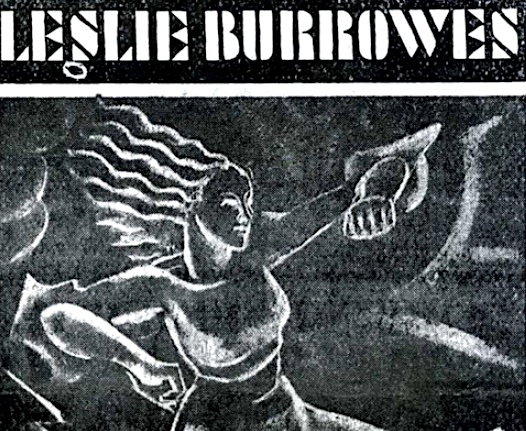
John Wyver writes: The line-up for the BBC’s 30-line transmission starting at 23.03 on Friday 19 May 1933 featured Russian singer Dimitri Vetter together with Lilian Lloyd-Taylor ‘with songs and costumes of the seventeenth century’. But the most interesting featured performer, at least for those of us interested in modern(ist) dance, was Leslie Burrowes, who gave her solos ‘Fear’, ‘Three Studies from a Celtic Suite’ and ‘Pastoral Dance’.
Born in 1908, Leslie Burrowes, according to The Routledge Encyclopaedia of Modernism,
had studied and performed with Margaret Morris, whose ‘free dance’ method belonged to the Hellenic and Duncanesque nonballetic dance techniques of early twentieth-century Britain. Burrowes rejected her original dance training in favor of [Mary] Wigman’s expressionism, returning to London in 1931 to proselytize on its behalf and to serve as Wigman’s official British representative. Burrowes’ attempts to establish Wigman’s dance in Britain were largely unsuccessful, caught in the squeeze between the better-established ballet and Hellenic dance.
She had already appeared in a 30-line broadcast in March 1933, and she would return to the studio in October, and then twice more under her married name of Leslie Goossens in February and July 1935, on each occasion giving a different selection of solos.
Burrowes is the subject of a richly detailed 2010 Dance Research journal article ‘Leslie Burrowes: A Young Dancer in Dresden and London, 1930-34’ by Larraine Nicholas (available open access here). This focuses on Burrowes’ professional life from the point when she went to study with Mary Wigman in Dresden to when she was back in London teaching and struggling to establish herself as a professional dancer. Nicholas doesn’t mention her television appearances, but her article is fascinating for the context that it provides for these transmissions.
read more »
18th May 2025

John Wyver writes: On Saturday 18 May 1935, The Evening Star published a detailed and fascinating story headlined ‘King’s Interest in Television: Tests Made at Windsor Castle’ which as far as I’m aware has not to date been noticed in any history of television, including (currently at least) my own forthcoming Magic Rays of Light. The story in the ‘On all wavelengths’ column, bylined simply ‘Henry’ (as above) began as follows:
The BBC’s young and enthusiastic television director, Eustace Robb, is a personal friend of the Prince of Wales. Probably that accounts for the Royal Family’s interest in the latest craze, television.
Historical footnote: in May 1935 the reigning monarch was George V, who had been king since 1910 and who died in January 1936; the Prince of Wales was Edward, destined to be Edward VIII for just January-December 1936.
read more »
12th May 2025
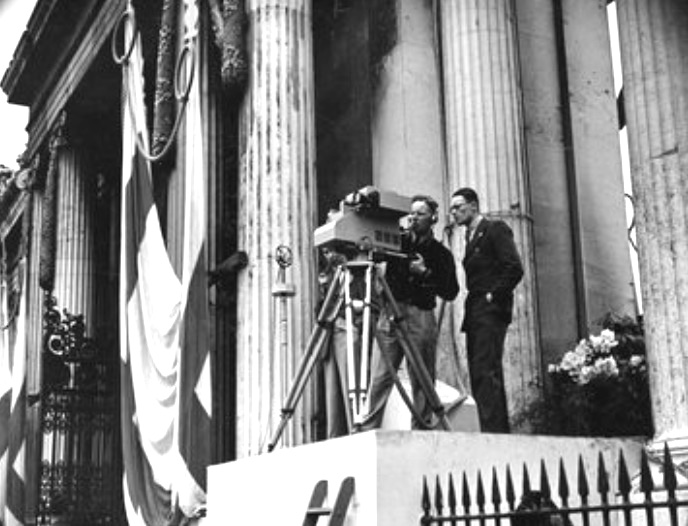
John Wyver writes: Today’s post is an extract from chapter 7 of Magic Rays of Light: The Early Years of Television in Britain, to be published in January 2026.
On or about 12 May 1937 British television changed. That was certainly the view of those producing the service from AP, and the assessment was shared by many of the estimated 60,000 who, from Ipswich to Brighton, were watching.
From 15.04 to 15.59 on that Wednesday afternoon a live outside broadcast from Hyde Park Corner featured scenes of the waiting crowds and then of the passing Coronation procession on its return journey to Buckingham Palace.
Although it does not enjoy the centrality in popular memory of Elizabeth II’s Coronation 16 years later, the pomp and ceremony that marked George VI’s accession was profoundly significant at the time. And the new medium made its modest contribution as, for the first time (leaving aside earlier test transmissions), viewers could see live pictures from a remote location of a defining occasion of international significance.
read more »
11th May 2025

The 150th original OTD post in this series.
John Wyver writes: Monday 2 May 1938 (I know, I know) saw pianist Harriet Cohen together with the a modestly enhanced BBC Television Orchestra give a studio concert at Alexandra Palace of music by Thomas Arne and Bach. The image above is of her on this occasion.
The producer of this half-hour presentation was Dallas Bower, but it’s less the broadcast that I want to focus on and more a fascinating Listener column that it prompted – and that was published on Wednesday 11 May. The writer of ‘Music to look at’, which was a careful close-reading of the broadcast, was the ever-so-slightly mysterious ‘G.G.W.’, who was still contributing reviews alongside regular filings by Grace Wyndham Goldie.
read more »
10th May 2025
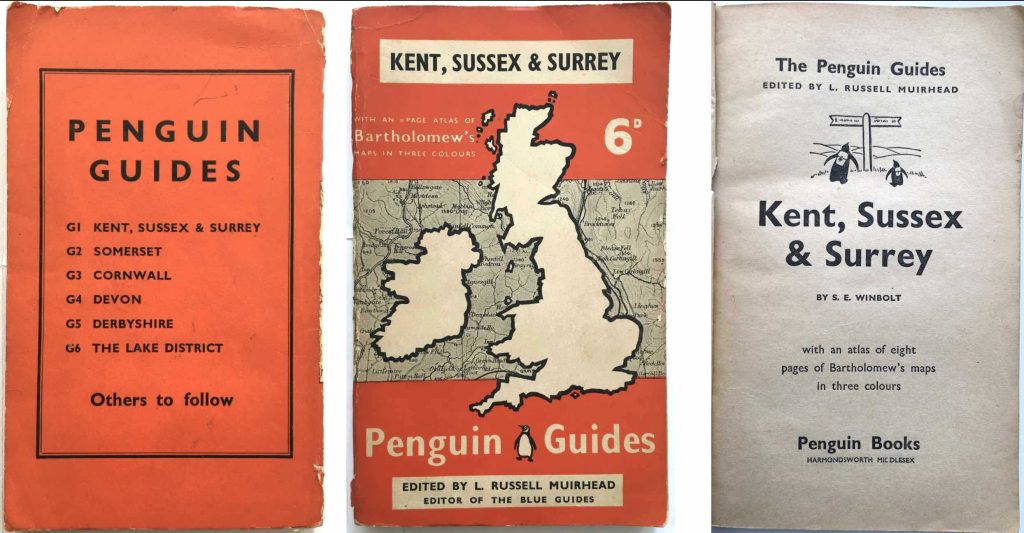
John Wyver writes: The evening of Wednesday 10 May 1939, just before a programme of Spanish music by Albeniz and Granados, offered the first programme in a series called Sunday in the Country. This was ‘a walk in the country described by Russell Muirhead, with the aid of photographs, maps and diagrams’. Plus a squirrel, of which a little more a little later.
By early 1939 the television service was looking beyond London and beginning to take an interest in country matters. The monthly outside broadcast Down on the Farm was a substantial rural offering, but otherwise the service was restricted, thanks to opposition from the unions, in not making film programmes.
read more »
9th May 2025
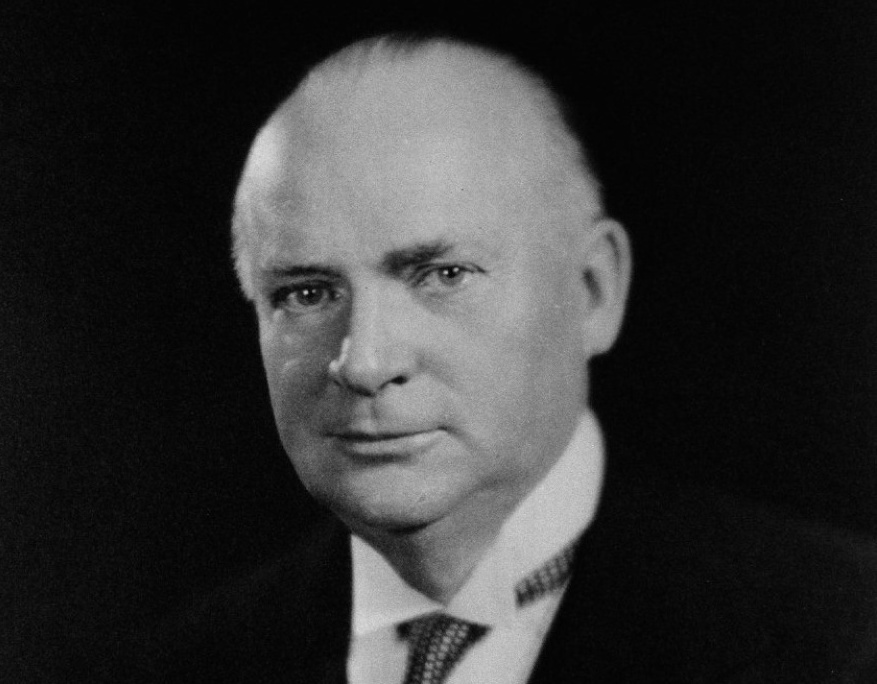
John Wyver writes: The evening of Tuesday 9 May was marked by an unfortunate incident in the studio at Alexandra Palace. During a 10-minute edition of Speaking Personally, in which R. B. Bennett, former Prime Minister of Canada, was talking about his country and the state visit of the King and Queen, a studio lamp burst somewhat spectacularly.
None of the splinters of glass reached his face, and as the Daily Telegraph detailed he showed remarkable composure:
This was Mr. Bennett’s first experience of being televised and he had been speaking for hardly a minute when the accident ocurred. He was congratulating the B.B.C. on their pioneering work in television at the moment.
The lamp exploded with a violent report, and as it near the microphone it sounded like a thunderclap to viewers. Viewers saw Mr. Bennett start and falter. Looking towards the camera man he said interrogatively, ‘Stop?’
Told to proceed he did so and had soon fully recovered confidence. He continued for some minutes giving a history of Canada, with special reference to the King’s visit. Afterwards, Miss Jasmine Bligh. the announcer came before the microphone and explained the cause of the interruption, with an apology to Mr. Bennett.
8th May 2025
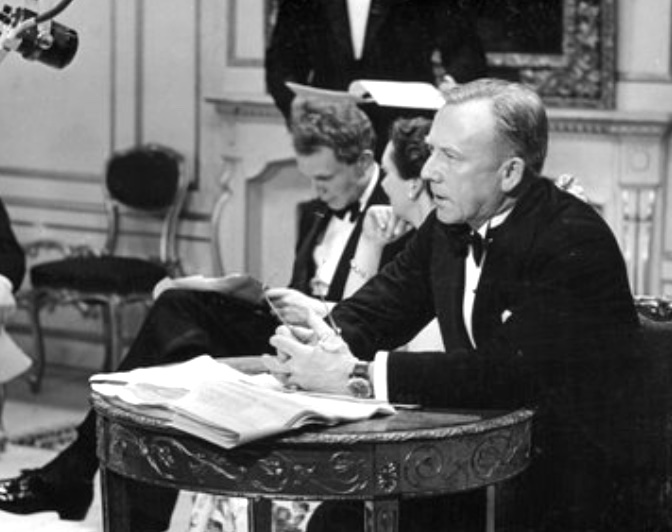
John Wyver writes: Thirty months into the high definition service Mary Adams’ Talks programmes were becoming increasingly ambitious, with an increasing number of broadcasts featuring multiple guests. Perhaps the most ambitious was the 50-minute Salute to America on the evening of Monday 8 May, mounted to acknowledge the state visit by the King and Queen to Canada and USA.
Billed as ‘a programme of the contemporary American scene, described in speech and picture’, this assembled an impressive line-up including J.B. Priestley, Stephen Spender and Anglo-American novelist Susan Ertz (above, a youthful Spender, Ertz and travel journalist S.P.B. Mais), along with readings of verse by Walt Whitman and extracts from Abraham Lincoln’s speeches.
Sir Frederick Whyte, director-general of the English-Speaking Union, contributed a spoken portrait of President Roosevelt. And there were film extracts too, with a flight over Grand Canyon and Boulder Dam, and shots of liners in the docks of New York.
read more »









